Rock'n’Roll, Funk & Soul, Gothic, Heavy Metal Families - Mundo Livre FM Campaign by CCZ Publicidade/Brazil

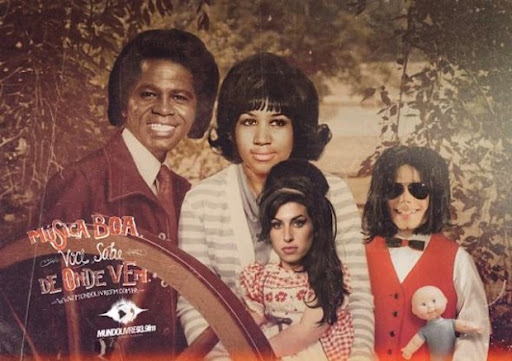
More pics and info here.
Rock'n’Roll, Funk & Soul, Gothic, Heavy Metal Families - Mundo Livre FM Campaign by CCZ Publicidade/Brazil


More pics and info here.
We all love getting wet! Don't we? Modern houses are converging towards marvelous Outdoor Swimming Pools. These pools not only the serve the purpose for sure but they also add to the beauty of the house as a whole.



More Photos>>
Like us of Facebook for Creative Updates
Marco Pandullo is a freelance photographer based in Pisa, Italy whose areas of expertise reside in fashion, portrait and fine art. His photos capture the natural beauty of his female models who playfully pose for the camera. Evocative in a way that leaves much to the imagination, Pandullo is able to bring out more than just beauty from his subjects.
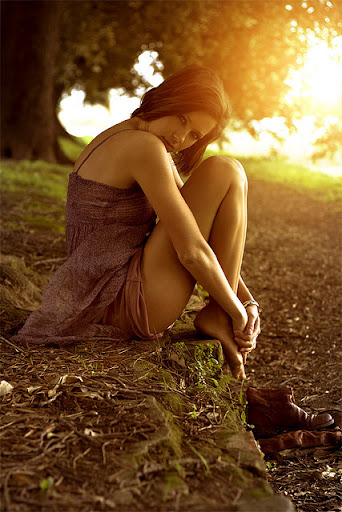

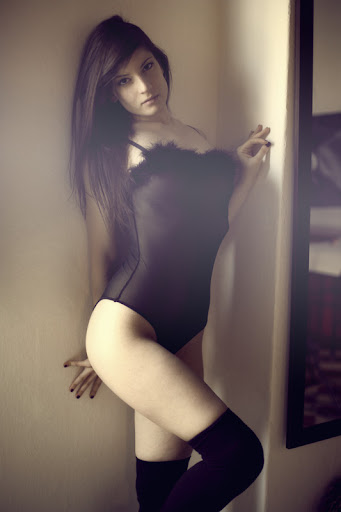
Continue >>
.
WiseGEEK conducted a very visual and informative study and presented a photo series, which compares what 200 calories actually look like in different foods.
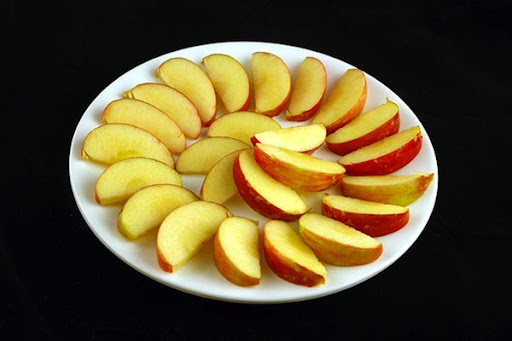


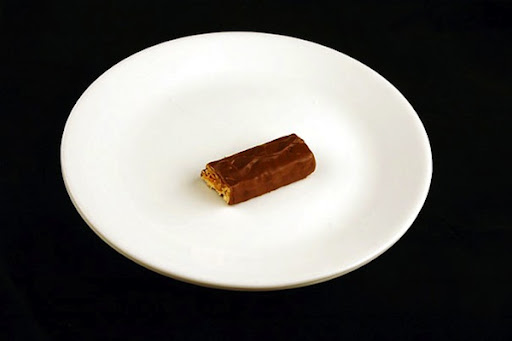


More pics and info here.
If a picture is worth a thousands words, how much is a diptych (pronounced diptik) worth?
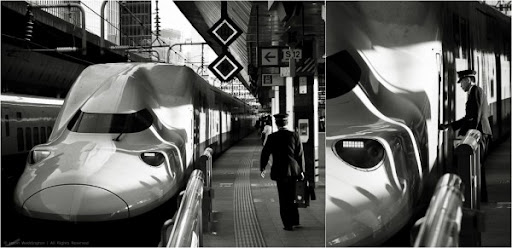
Train conductor walking to a Japanese Bullet train in Tokyo Station, Japan
Photography is about visual communication: sharing stories, ideas, and feelings through images. A diptych of two images, or parts of two images, is an impactful storytelling tool. Look for thematic, compositional, and other visual synergies that will make your diptychs more powerful than the sum of their parts.
By using a zoom lens, or simply cropping a larger photo, you can combine two images that have different effective focal lengths. This can be used to complete the story and prevent the viewer from asking “what’s going on here,” like in this photo of my son collecting acorns in a park. And by the way, what is it with kids and acorns? I remember stuffing acorns into a plastic soda bottle and keeping them in my bedroom as a child…
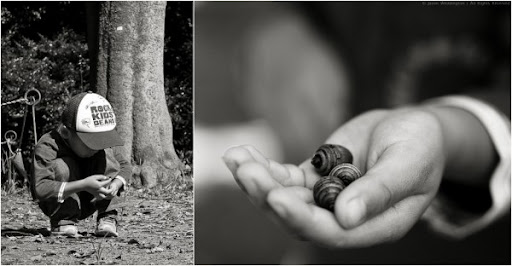
Boy collecting acorns
This diptych from from an engagement shoot in Kyoto, Japan, tells a story by combining a “before” and “after” image.

Smartphone portrait
There are endless possibilities here. Factors to consider are how the images work together, as well as your final use for the diptych. If your image will be viewed on computer screen, a horizontal orientation will allow viewers to appreciate a large photo without scrolling. If you’re thinking about printing the photo, or showing it on a tablet or smartphone then this isn’t as much of an issue.
Here are a few diptych aspect ratio templates that I like. These are not hard and fast rules, just some ideas to get you started.

Two square images placed next to eachother

Two 2:3 aspect ratio portrait images placed next to eachother

Two 3:2 aspect ratio images placed one above the other.

A 5 7 image next to a 5 4 image places the division between the images almost exactly at the golden ratio line of the larger diptych.
I hope this article has given you a few new ideas for how to showcase your photos. Feel free to post a link to your diptychs in the comments.
I appreciate feedback, please comment below or feel free to connect with me through Facebook or Google+. I’ll do my best to answer questions and reply to comments.
Post originally from: Digital Photography Tips.
Check out our more Photography Tips at Photography Tips for Beginners, Portrait Photography Tips and Wedding Photography Tips.
Use Diptychs to Tell a Story
You've been reading their articles for months or years, have you ever wondered "Who are the photographers who write for dPS"? Today meet photographer Darlene Hildebrandt from Alberta, Canada.

I graduated from a 2 year photography program in 1988! So over 25 years now, mostly as a professional. I’ve been in the industry in many forms including: doing commercial studio work; had my own portrait/wedding studio for 12 years; was a trade rep for an album company and coached my photographer clients on business; some editorial work; travel photography; and the odd image sale for stock. I’ve also done tons of art shows and sell my work in local galleries.
I have a part-time job at a camera store, in the accounting department of all things. Mostly because I’ve done my own accounting for years and I needed something to get me out of the house after a 6 month extended RV trip around Canada and the US. Camera discounts are also a bonus, and it has connected me with teaching photography classes which I do here at the store as well as with two other local photography schools.
The photography that I do now is mostly for myself and my articles and classes. I make most of my living teaching classes, doing private tutoring (in person and virtually using skype), leading workshops and photo tours.
Tough question. I’d have to say travel photography, which to me encompasses fine art, urban, landscape, HDR, night photography, and people. I find joy in all those areas so I’d find it hard to pick among those. If I had to I’d say travel photography with people. Those are the images I find I want to see first when I download after a long trip. But I also love night photography and HDR, both of which I teach. Okay I can’t pick, so can I say I’d pick – “general”!
May 2012 was the date my first article was published with DPS. I wanted to teach to a wider audience than I currently had on my own site and share my knowledge with more people. DPS allows me to do that in a big way. I love hearing the comments from readers who have enjoyed my articles. Seeing their resulting images after applying my tips, and hearing how excited they are about photography is why I do this.
I’m a Canon shooter, I have a 5D MarkIII. However, not to get into a flame war here, I believe the camera is just a tool and whatever you use is just fine, be it Canon, Nikon, Pentax, Sony or something else. It’s about learning how to use it and this is the right place to do that! Not sure I have a favorite lens, but I’d say the extremes. I love either really wide angle images, or long lens tight shots. I tend to live in the 17-20mm and 150-200 range more so than I do in the middle. My wide is a Tamron 17-35mm. I also really love my 85 f1.8 for portraits.
Invest in education before you invest in gear. I’ve had several students want to jump from an entry level DSLR into a full frame one, thinking that it will magically make all their photos better. While there are some advantages of full frame (better at higher ISO, can get better shallow depth of field, etc) in my personal opinion mastering some of the other aspects of photography first will take you further. Things like getting the right exposure; what IS the right exposure; metering; controlling contrast; composition; lighting; choosing the right lens for the job; white balance; lighting; working with people; confidence; shooting in manual and RAW modes, and more. A full frame SLR is a big investment, but I suggest you invest in yourself first. An experienced, great photographer can do more with a crappy camera, than an inexperienced photographer can do with great camera – in my opinion.
I have two projects in the works right now. First is a virtual photography class I’m collaborating on with another photographer, still hammering out the details as I write this but by the time this is published it will likely be available. It will be an 11 week (first one is free so you can try it out with no obligations, no money down), 15+ hour, live class which will incorporate lecture, Q&A, image reviews, and weekly assignments. The topic is two fold – Lightroom mastery and Image mastery, so a marriage of technical (image processing) and artistic (shooting and processing).
The second is an ebook that I’ve had in my mind for a while. It’s 75% written, now I just need to find time to finish it and process all the images. It will feature photo tips, things I learned along the way on my 6 month RV journey to reinventing myself as a photographer, as well as inspirational images.
My main hub is my website Her View Photography, where you can get my FREE ebook “10 Challenges to Help you Take Better Pictures Without Buying More Gear” and find out more about my upcoming photo tours, workshops and photography tutoring - both in person and virtual using Skype or Google Hangouts.
You can see some of my images on my portfolio site. My social media links are: Facebook, Google Plus, Twitter and Pinterest. Contact me here or by commenting on this article.
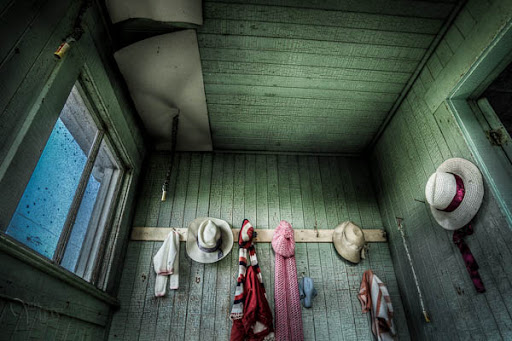

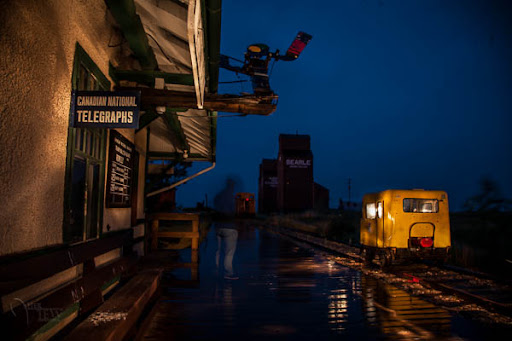
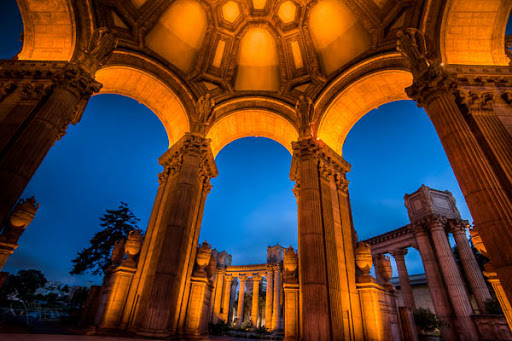


Post originally from: Digital Photography Tips.
Check out our more Photography Tips at Photography Tips for Beginners, Portrait Photography Tips and Wedding Photography Tips.
Meet The Photographers Who Write For Digital Photography School ~ Darlene Hildebrandt
The colour of the object illuminated partakes of the colour of that which illuminates it. - Leonardo da Vinci
In our past columns (see links below) we have discussed such topics as how one colour can complement or distract from a bordering colour. We have also learned that to truly see colour one has to understand how shades of grey are comprised of mere percentages of black ranging from pure white to pure black. A primary objective coming from these discussions should be an understanding of how contrast plays a primary role and is an integral component of the final image.
Let's look a little deeper into this concept and how we might apply this knowledge in our own picture making.
For the nature photographer there are essentially two core subject matters upon which we will concentrate our efforts, those being critters and where critters live. How each is approached and photographed will depend on a litany of variables, but essentially the one constant is that we will have little control over the lighting. The quality of that light, however, will often decide how we have to approach the image and what type of photograph to make.
Generally speaking, where I live on the Tropic of Cancer, the light will be best up to about two hours after sunrise, and from two hours before sunset. It can also be safely assumed the closer you get to the equator, the more quickly the light will become harsh with contrast and hard edges shadows after sunrise. Conversely, the closer you are to the poles the longer the "golden hours" of nice warm coloured light. When the sun is high in the sky at noon it is often too harsh and creates far too much contrast to provide good photo opportunities, unless we adjust our approach.

Photo 1
It has been said that beauty is in the eye of the beholder. This old gobbler, in photo 1, was having a difficult time locating a mate - evidently it wasn't just me who thought he was butt ugly. His temperament wasn't stellar either as I recall, let's just say this was the last image of the sequence. With that having been said, the photograph was made around high noon and in lighting conditions that had far too much contrast for a pleasing image. By selecting a tight composition to take advantage of the contrasting colour it becomes possible to shoot throughout the entire day. Should this composition not be so tight, the image would have been far less effective. Identify the complementary colours in the scene and allow those to be the focal point while being somewhat oblivious to the subject. In this case the red is the focal point and is accentuated by the blacks.
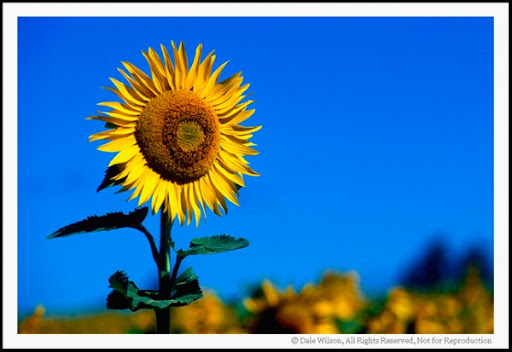
Photo 2
If one is driving down a country road around lunch time, some great tunes rockin' on the radio, a cloudless blue sky overhead, the arm thrust out the window ala truck driver style ... well, what could be better? Why a field full of beautiful sunflowers appearing over the next hill of course.
Should one compare the golden colour of the sunflower to the deep blue sky in image 2, you would soon realize that gold and blue are opposite on the colour wheel. As a consequence of being complementary colours (or very close to) they will immediately create a colour contrast that will work even when the light is harsh. All that remains is to get permission from the farmer to enter his field and compose the image so there are no competing colours in the viewfinder. Voila, you now have a successful photo taken at a time of day when most photographers are having a noonday nap.
If you think of the colour wheel and how colours complement each other you will soon intuitively be making photographs without even thinking of colour theory. When the scene looks good in the viewfinder it usually is, capture the image and analyse it at home.
And remember, if you are having fun you are doing it right.
Post originally from: Digital Photography Tips.
Check out our more Photography Tips at Photography Tips for Beginners, Portrait Photography Tips and Wedding Photography Tips.
Learning to See, Part V

Her images were only uncovered and purchased by John Maloof in an auction after her storage locker was repossessed shortly before her death.
At the time of buying a box of Vivian’s negatives John didn’t even know the photographers name and had no idea about her talent – however as he began to examine and scan the images he realised he’d stumbled upon an amazing hidden archive of photos.
He tracked down more of her work that others had purchased in the auction and in doing so discovered Vivian’s name and began to also uncover pieces of her story. Viviane – who worked as a nanny – had taken up photography in 1949. She took most of her photos on days off, at first around New York and in Chicago where she moved in 1956.
She continued to shoot right through into the late 1990s but also shot film and recorded audio. When her work was discovered in 2007 there were over 100,000 negatives and many hundreds of rolls of unprocessed film in the collection. John began to scan and collate her work and shared some of it on a blog and later a website dedicated to the project.
In doing so the photography community around the world became aware of this previously undiscovered talent. Exhibitions around the world followed and more recently John started a Kickstarter project to create a documentary about Vivian Maier.
In the last week a Movie trailer for this full feature length documentary was released which tells more of Vivian’s story and the project.
The documentary is expected to be finished later this year and release dates will come soon. Follow more news of the release on Facebook or on the Finding Vivian Maier site.
You might also like to view this earlier video from Chicago tonight which also tells the story.
Post originally from: Digital Photography Tips.
Check out our more Photography Tips at Photography Tips for Beginners, Portrait Photography Tips and Wedding Photography Tips.
The Remarkable Vivian Maier Story [Documentary Coming Soon]

Fashion photography is the business of photographing fashion. That means that the product we are selling are the clothes. It is important for the young, aspiring fashion photographer to understand this. When a client hires us, we are being hired on our technical ability of understanding garments and the way they will photograph. I see so many photographers who are just starting out and building their books and the weakest part of their photographs is the styling.
Styling Mistakes:
1. The clothes are wrinkled or out-dated.
2. The clothing is accessorized poorly.
3. The model doesn’t befit the style of clothing she is wearing.
All these factors are of key importance when photographing fashion. If I’m hired to shoot a swimsuit catalogue, I hire swimsuit models. If I’m hired to shoot an advertisement for a French couture designer, my model is going to be completely different. I will talk about how important the wardrobe stylist is in another blog. Right now I want to address finding the right model for the assignment. Recently I was hired by a fashion designer to shoot her small ad campaign when she opened her boutique on Melrose Avenue in Hollywood. This designer specialized in high end, very expensive evening gowns geared towards the Hollywood celebrity clientele. Think awards shows: Grammy, Emmy, Oscars. The red carpet is where you will see her work. Not at the local supermarket or dog park. Evening wear is a specific genre of fashion and it is highly dictated by couture. One of a kind, in other words. Her work was definitely unique in that she used spandex in the blends of satins and silks to create tight, body fitting gowns. Her dresses were very “unforgiving”. My model had to be rail thin to support the look and feel of the clingy, form fitting fabric. Any girl who had a little roundness to her frame wouldn’t work. I eventually decided on the girl you see in the picture, Shay, from Photogenics in LA. Shay’s 5’10″ frame worked perfectly for the size 1 dresses we had to shoot for the job. She doesn’t have an ounce of extra weight on her body and she’s not curvy by any stretch of the imagination. She is, by all means, the definition of a couture and runway model. And she pulled off this look perfectly for the job!

One thing that is SO important when you are beginning your career as a fashion photographer is for you to understand the history of fashion. How many of you have picked up a book on the subject? Because I can tell you you are going to need to understand fabrics and how they respond to light. You are going to have to know the difference between an empire waist and a waistcoat (ie.right). When your client tells you in your pre-production meeting that the fabrics you will be shooting are velour and satin, can you automatically tell them which lighting would work best for those two fabrics? You better be able to. Fashion photography is a business just like any other. It is about fashion and you should know it inside and out!
Here’s some suggested reading:
1. The Complete History of Costume & Fashion: From Ancient Egypt to the Present Day by Bronwyn Cosgrave
2. Fashion (Oxford History of Art) by Christopher Breward
3. 20th Century Fashion: 100 Years of Style by Decade and Designer in Association with Vogue by Linda Watson

Models who don't have much experience in front of the camera need special attention when you put them in front of yours. After so many years experience shooting, sometimes I find it difficult now when I get a girl who's new and inexperienced. So maybe I'm learning here myself, by writing this blog. It can be frustrating at first, when you get a girl who's unfamiliar with her body and insecure as well. I don't adhere to the philosophy of talking to them while they're getting their hair and make up done. For one, this distracts the hair and make up artist. Instead, I watch them carefully. I look for their overall sense of being. How they hold themselves, if they are chatty with the hair stylist or if they're shy and difficult to break through. I look for their body posture, they're overall presence. It's a bit like being a detective. Or even a psychologist.
When I get them in front of my camera in the beginning, I warm them up by being friendly but not overly fake. I want them to know that my praises are genuine and not over the top. I have to remember that new girls to need a lot of praise. For the most part now, when I shoot, the models are experienced. It's easier for me because I don't have to do a lot of coaxing or even coaching. They follow my few directions and it's onward to a fabulous shoot. But new girls don't know how to emote, for the most part. And they don't know how to pose. They are unfamiliar with their bodies, making it tough for them to exude confidence. I usually warm up by shooting a few “test” images so I can feel them out and see where their strengths and weaknesses are. I am not a mouthy photographer. I don't yell out things like, "oh baby, that's hot!" or "oh wow, give it to me baby". Some girls need that, I suppose. To me it just feels cheesy. I feel it's overkill to tell them every time the shutter clicks how amazing they are. But for some new girls, it’s almost required. So I have to relent and shout out a few of those typical lines. I forget I have to, and I'm quickly reminded to do so when they're not warmed up after the first 100 pictures.
I have to admit that most of the time I have to get on the cyc and show them a few poses. Then I start doing it in front of them when I have my camera up to my eye, making it a hilarious but effective showcase. They follow my lead eventually and we can get on with making a great fashion shoot.
Music helps. Laughter helps. Making things light and simple, not overly tense helps. After all, we have to remember it's a fashion shoot, not Supreme Court. Girls look better and move better when they're relaxed and at ease. I'm not a tyrant on my sets so I think this generally helps the nervous girls relax after a few shots.
The shot above of Monet Mazur was taken when she was a mere 16 years old and just starting out as a Ford New Faces model. Monet has gone on in her career to become an accomplished actress with roles in Johnny Depp’s “Blow” and “Stoned”, where she played famed fashion icon and rock wife, Anita Pallenberg. I had shot Monet a few times before we did this shoot together and I noticed that Monet worked best when she was given a role to work with. Having her walk and move around worked better than standing on a seamless and posing. So I took her out to the hills in Malibu and we just played. The results were so magnificent that I did my very gallery exhibit with the 16 images we got from our one day shoot.
Some new girls just "have it" and they are a breeze to work with. Other girls you need to fish out they're strong suits and show them a lot of moves. And at the end of the day, you have to remember that even Kate Moss had her first test shoots. Pictured below:
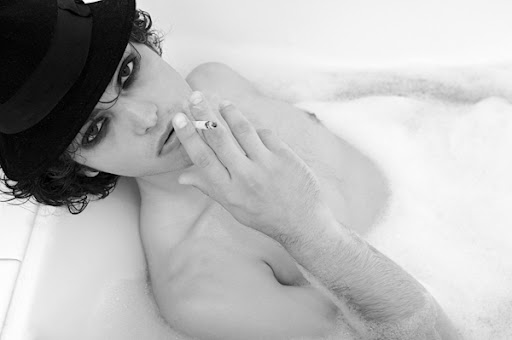
I’m going to go ahead and admit it: I was very sad about Michael Jackson’s early departure from this realm. No, I didn’t own any of his albums nor did I go to any of his concerts. I lean more towards rock n’ roll, baby. But I grew up with Michael, in a sense. We are roughly the same age and I grew up listening to the Jackson 5. And I witnessed the Motown 25 year Anniversary special on TV the night Michael did his legendary moonwalk and the music industry changed, over night! I remember that night clearly, in 1983. Michael took the world by storm! He became a legend!
I have had friendships torn up over his death, literally. Some of my friends just couldn’t stand him and thus really weren’t too sympathetic about his early passing. They just couldn’t see past some of the things Michael was accused of doing. I, on the other hand, was moved by his music, his passion, his abilities and his contribution to the world. He was a master at his craft. I overlooked his personal life and tastes because I was only interested in his creative process.
This post isn’t going to be about Michael Jackson, per se. But a few nights after they announced his death, my husband downloaded an interview they did with Michael about 5 years ago. There was one part in it that really struck a nerve, and I thought: THIS is what I’m going to blog about next! It was one of those tacky documentaries where they are truly more exploitative than informative, and I knew eventually I was going to become outraged by the interviewer’s intrusive and disrespectful brow beating on Michael to get him to open up to some pretty heavy subjects.
In the beginning, though, when they first met at Michael’s infamous Neverland house, they were in his music studio and the interviewer was asking Michael just how he goes about writing a song. Michael answered, “Look, if I HAD to sit down at the piano and tell myself I HAVE to write the best song I’ve EVER written, nothing happens. Something from the heavens has to say, look, this is the time that we’re going to lay this song on you and this is when you can have it. I remember when I wrote Billie Jean, I was in my car driving down Ventura Blvd. All I had in my head was, I want to write a song with a great bass hook. And then I just let it go, really. Several days later the music came to me.” The interviewer stopped him and asked, “Yes, but WHERE did the music come from?” Michael pointed to the ceiling and said, “From above. The thing is, artists seem to get in the way of the music. You have to get OUT of the way. Don’t write the music, let the music write itself”.
“What’s going through your mind when you’re dancing?” the interviewer asked. Michael said, “I’m not thinking. Thinking is one of the biggest mistakes a dancer can make. You don’t think, you have to FEEL. You become the bass. You become the clarinet and the strings. You become the physical embodiment of music“. He went on to try to teach the interviewer how to moonwalk. Towards the end of the interview Michael became frustrated with the interviewer and at one point said, “You know, the process is really hard to explain“.
It IS hard to explain, I have to give him that. Look, photography is such a technical medium that sometimes we get too caught up in all the technical aspects of shooting. I agree that we have to have a good understanding of how to use the equipment we need, in order to create the images we want. But I think a lot of the time, photographers get too caught up in the gear and they don’t realize that, honestly, it’s not the gear you’re using, it’s the photographer behind all that gear. Too many times, I think, photographers HIDE behind their cameras, behind their gear because they are afraid to let go and become one with the camera. Look, NO camera in the world is going to get that shot for you or tell you when that moment is, YOU’VE got to find the shot and the moment and get it. You can go out and buy all the equipment you can afford and try to copy a photographer’s work that you admire but that doesn’t guarantee that you can create the same photographs. After all, a camera is just a housing unit. You need an eye with that thing in order to take phenomenal pictures. It’s hard to articulate how to get the creative impulse to create something that makes a statement or create phenomenal art. You DO have to learn the discipline and the craft, but ultimately you have to let it go, and let the impulse to capture the moment come and not have a barrier. If you’re too wrapped up in the technicality of photography, you won’t be able to feel the moment and get the shot.
There’s an old saying. There are two different types of photographers: Image Takers and Image Makers. Image Takers have a lot of technical know-how, and that’s about it. Image Makers create memorable art and photographs, they leave behind a legacy. Personally, I’d rather be an image maker but I guess to each their own.
I’ll end with this, you can say what you want about Michael Jackson, and I’m not going to get into an argument about him however you cannot dispute the fact that he was a legendary artist and has left behind a legacy and that’s because he knew that he had to let it all go and let the music write itself. Oh and this kid could fuckin’ dance!
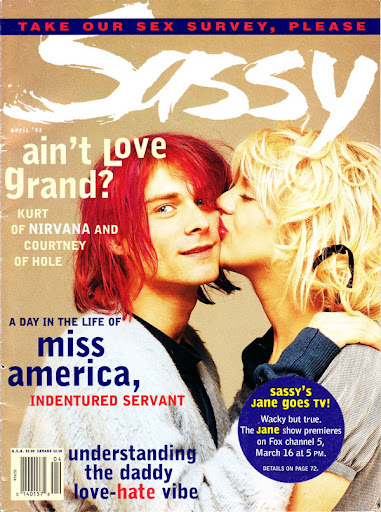
I received an abundance of GREAT questions. To answer all of them is going to have to be spread over a few posts. But Thank You All for the great ideas. Can I just say it here: you guys really inspire me! And yes, this will keep me inspired and busy over the next few weeks! I will answer each and every question here.
Okay, so how did I get started? Well, I graduated from The Art Center College of Design in 1987 with a degree in photography. Art Center was an incredibly great college because it really educated it’s students on what it was like in the “real world”. One of the things it really enforced was that you need to leave college with a kick ass portfolio and the last two semesters were all about portfolio building and business classes on how to market and what to do to get yourself established in the commercial photography world. The good news in that is that I was somewhat prepared to enter the commercial world. The bad news? NOTHING prepares you for the “real world”. It’s an education in and of itself. It’s an education based on experience and trial and error. Just like learning lighting. You learn the techniques, the basics. But it isn’t until you do it over and over again that you really truly LEARN lighting.
On a portfolio/test shoot related question…
20 is a good number of photos to show the agencies. If your photos look like the photos in the magazines on your newstand then you should be alright, but again, do YOU think they’re good enough? If you are doubting yourself, they probably aren’t good enough. Believe in your work!
In this case, you really need to network and be resourceful. Speak to boutique owners about using their clothes for photo shoots, go to schools and speak to fashion students who have their own lines or are working to become stylists/designers, go to events and meet people in the fashion industry and make the connections and relationships to facilitate your styling for shoots! It is possible to go straight to the designer, you just need to make the contacts, it’s A LOT about networking. Start out small and local. Or find someone with a high credit card limit
I started out making cold calls. Cold calling is a horrible, humiliating experience but we ALL have to do it in the beginning. And here you go, kids: I STILL MAKE COLD CALLS. You have to. The only difference between making cold calls now and back then is that now, I just don’t care as much. Back then, I was so devoted and starving and desperate to get a gig. Nowadays, I’ve learned that none of that matters. I just want to get in the door now. I’m more detached.
I did a few cheap editorials for a local newspaper called the LA Weekly. The LA Weekly had a two page fashion section. And Gloria Ohland gave me a shot. I did a few of those and got my name out there. I went in to see Apparel News. To this day, I’ve seen them at least 6 times since 1987, and they’ve NEVER hired me. But other people have. Haha….hey it’s my blog, I can say what I want. When I was cold calling, 9 out of 10 just didn’t give a damn. But what does that leave you with??? The one who does. I met an art director named Stephen Kamifuji. He owned an ad agency and he liked my work and he liked me. He hired me to shoot a few ad campaigns for small little companies like Honda, Bugle Boy and B.U.M. Equipment. How did I get that break, honestly? Well, Stephen really liked ME. Part of getting a break in the business is that your personality will sell you more than your work. Real world shit. And often times, not what you want to hear. But it’s the truth. People will end up hiring you because they basically just like YOU and want to work with YOU. Stephen and I just clicked. Who knows why. And I never questioned it, even back then. I got my first ad campaigns under my belt. I met Stephen through cold calling. Do you recognize his name? He’s the owner and publisher of Genlux magazine. Yep, that’s right. The magazine that I shoot for on a regular basis is owned and published by one of my very first clients. That’s how it works! 22 years later, he is still working with me.
My first big huge break was in 1989. I really wanted to get into a magazine called Sassy. Sassy isn’t around anymore. But back then it was a really hip teen mag like 17 Magazine. I actually created a portfolio that was totally in the style of Sassy. I packaged it in this great little box and sent it off to Neil McCutcheon, the art director. Lo and behold, he called me. I will always remember the day! He called me and I spent my own money to fly to NYC to meet him. We clicked. He liked me. And hired me. I shot a few editorials for Sassy Magazine and that was my first big break. Two years out of college. I landed my first big national fashion magazine assignment.
As much as I’d love to help you answer this question, it’s a question many of you out there need to answer yourselves. The question is not only whether you have the talent to take photos, but whether you have the passion and LOVE for fashion and are willing to do just about anything to be in the business.
After I graduated from Art Center, everything that I owned fit into a duffel bag and I carried it, along with my passport, with me wherever I went. I was ready and willing to be anywhere an opportunity was offered. I was given the chance to shoot an editorial, by an ex-model who became the Men’s Fashion Editor of Spanish Elle, in Barcelona one day and I caught a flight and was there the next day. My boyfriend at the time was furious but I didn’t let anything stand in the way of moving my career forward. Is this something that you’re willing to do? I’m not saying it’s the be all end all but it’s a matter of the lengths you are willing to go, to get to where you want to be.
I persevered. I never let the 99 rejections in a row keep me down. In fact, with every rejection I just grew more determined and even more belligerent that I was going to make it no matter what. I kept shooting in the meantime, kept honing my skills, kept practicing my lighting, kept updating my portfolio, kept cold calling and kept keeping on. Nothing stood in my way. No relationship, no personal crisis, nobody telling me I should “get a back up plan”. I didn’t have a “back up plan”. I HAD to shoot. I HAD to make it. Failure was not an option.
Does it always take this kind of determination? I am pausing now while I think about this. Let me have a whiskey. I’ll be right back.

Jos Gu zar is a young Mexican Graphic Designer living in New York City. via PhotoHab – Social Photography Blogs.






Logo are one of the most important components of any successful brand, thus logo must be design perfectly and with creativity. Most logos communicate ideas to people, means logos describe the nature of business in a shape.

For More Logos>>



For More Photos..
In expanding our Fish Head series we sorted out to create another dynamic group of images playing with surface tension of water naturally. Some action and intensity has been put into this which provides dynamicity of images when some characters dive into a role.
Collection of some of the most sensual photography by the best artists around the globe. This post is our daily series of posts showing the most inspiring images selected by GenCept and our users.
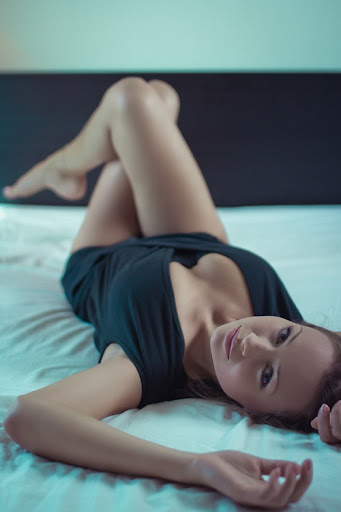

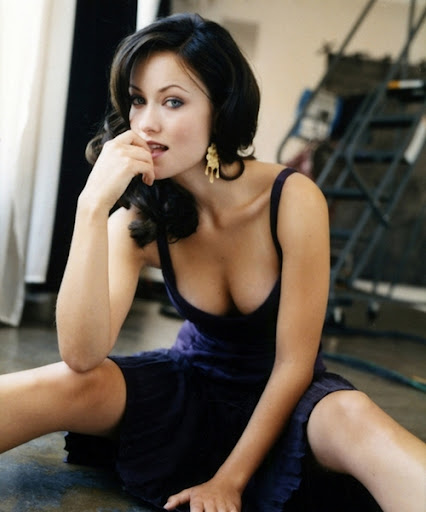
Continue >>
.